Teens, the elderly figure in Gold Coast’s growing homeless
EVERY night across the Gold Coast, about 4000 people are homeless and many of these are our most vulnerable — teenagers and the elderly.
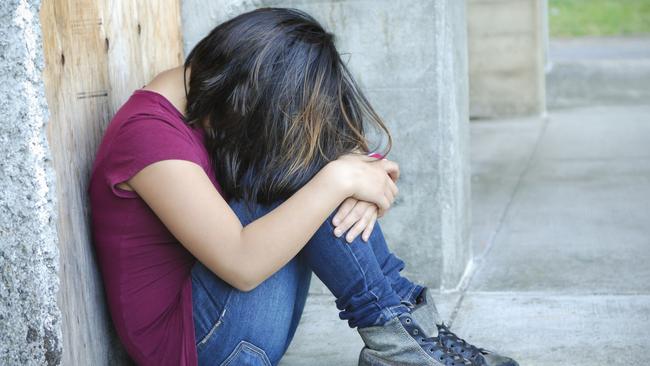
Lifestyle
Don't miss out on the headlines from Lifestyle. Followed categories will be added to My News.
TEENS and the elderly sit on opposite ends of the life spectrum but are some of the most represented on the Gold Coast’s increasing homeless scene.
There are about 4000 homeless people on the Coast and while about 800 of them are youths, local services say this number is growing alarmingly.
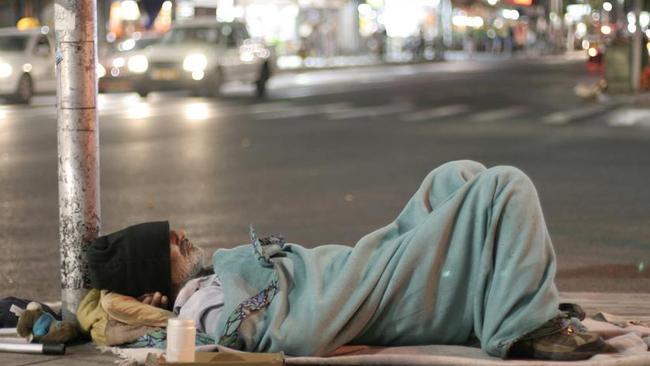
THE TEEN
Fourteen-year-old Brienna and 15-year-olds Domynique and Isabella were sitting on a park bench at Surfers Paradise under a blanket enjoying a meal from Rosies. When asked how they got there, they reply “family stuff.”
While Domynique and Isabella were shy to talk, Brienna was open about her situation.
Late last year was the first time Brienna ran away from home.
After two months, she returned home, only to find her mum had been put in prison.
“I went back home but then realised there was no home to go to so now I’m out here,” she said.
“I’ve been here since January.”
DONATE TO GOLD COAST CEO SLEEPOUT
Brienna said she could live with her grandmother but it would be “worse” than being homeless, so she chose to sleep on the street.
Even the girls have noticed an increase in people “like them” sleeping rough. They said the more of them there were, the safer they felt.
“It’s like we’re all family,” she said.
“Especially the younger ones, we all look after each other and there’s so much more of us.”
When asked where they sleep, Brienna said they moved around a number of abandoned houses.
Having recently been expelled from school, when asked what she needed, Brienna said she was bored.
“I want a job,” she said.
“I’m so bored every day. I want to do something with my life.”
She said services like Rosies made her feel like people do care.
“They do care and I respect them and I appreciate their help,” she said.
Brienna said living rough was tough, but they all just “find their own way”.
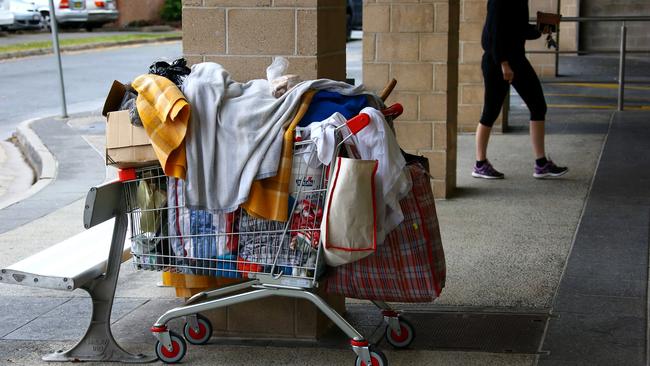
THE MOTHER
Thirty-five-year-old Tracey was living on the Gold Coast with her husband and two kids when her life was turned upside down. In the space of only months, her husband was sent to prison and she was suddenly unable to pay rent.
She found herself, along with her 19-year-old son and 12-year-old daughter, homeless.
“I lost my house, I lost everything and I ended up on the streets,” she said.
A $300-a-day addiction to methamphetamine ensued. After years on the street and then emergency housing across three different states, she relocated to the Gold Coast.
Now two years clean, she is determined to turn her life around and in nine days, will move into a new home.
DONATE TO GOLD COAST CEO SLEEPOUT
Tracey said her situation could have happened to anyone.
“I grew up in a wealthy family but addiction and homelessness can happen to anyone,” she said.
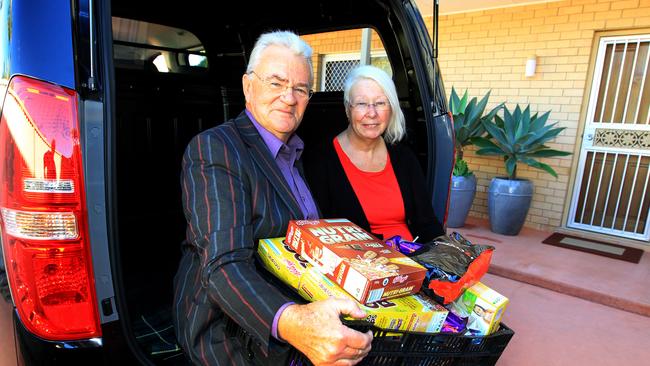
THE ELDERLY
An elderly man living on the Gold Coast is left with only $44 to last a fortnight after his rent is taken out of his pension. He has got a roof over his head but with such a small amount of money to live on, he can’t afford power.
He’s lived for more than two years in the dark. When the sun goes down, the lights are off, there’s no hot water.
Lindsay Burch from Havafeed said while the gentleman was not homeless, this case, and others like him, are falling through the cracks.
“Here is where the real issues are lying with people — it’s almost a hidden segment of the population on the Gold Coast,” he said.
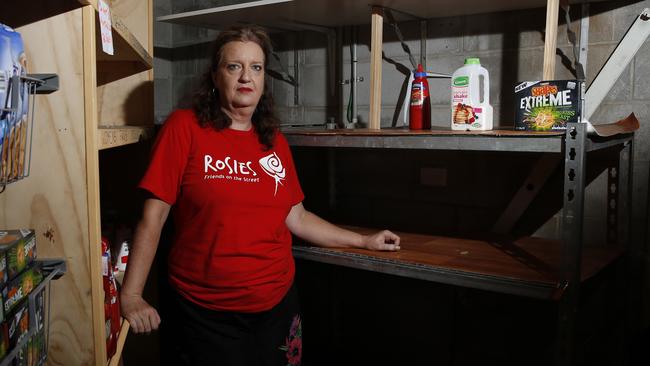
THE BACKGROUND
Charity organisation Rosies reaches out to the homeless and co-ordinator Wendy Coe said teenagers in high school are among those most affected.
“You would be surprised at how many kids that are in schools who are homeless,” she said.
“We see young people and teenagers between the 15, 16, 17 age group.”
Ms Coe said aside from youths, the ripple effect of domestic violence had sparked an increase in women and their children seeking help.
“Our other biggest group of homeless is women and children, from domestic violence,” she said.
“I’ve definitely noticed an increase in numbers, we count the number of people in our outreaches and it’s definitely increased in the last two years.”
Ms Coe said those who attend Rosies are not only locals.
“There’s so many women who are coming from interstate fleeing a domestic violence situation,” she said.
According to Ms Coe, the rate of homelessness on the Gold Coast is constantly increasing and the causes constantly evolving.
“The numbers are getting bigger and there are multi-facets to homelessness, there’s no one reason why someone becomes homeless,” she said. “It’s drugs, it’s alcohol, it’s lack of affordable housing, it’s mental health issues — it’s just a huge problem.”
Havafeed is another local service that is seeing first hand the dire situation facing the Coast.
But for founder Lindsay Burch, it’s the elderly demographic that he sees suffering the most.
“We are getting a lot of pensioners. It’s heartbreaking to see them pull up in their walkers needing additional support,” he said.
Over the 22 years the service has been operating, Mr Burch said those needing help is constantly changing.
“We’ve been operating now for over 22 years and over that time we’ve seen a transition in the type of people that we’re reaching out to,” he said. “We’ve had a diverse range of people whose needs are also quite vast — but they always need food.
“One in six Queenslanders have experienced food insecurity so you have some idea what’s happening foodwise.”
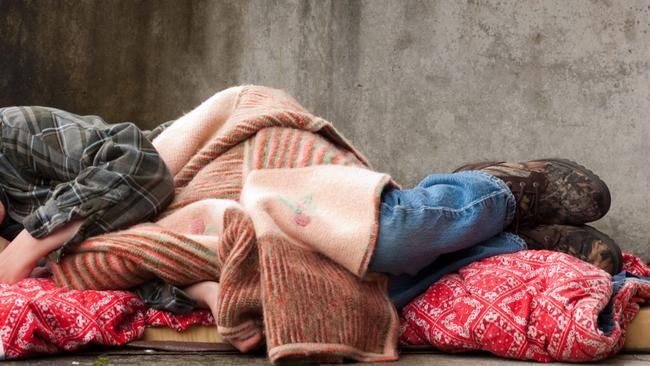
COMMENT
Gold Coast Bulletin editor Cath Webber
WHEN I was a little girl, my mum used to tuck me into bed and often said: be grateful you have a nice warm bed and a roof over your head.
If it was raining or stormy, she said it with an earnestness which left me a little bewildered.
Truth be told, I was probably more worried about the bogeyman and preferred it when she told me to ‘think of nice things’ to get to sleep — like an upcoming birthday party.
I never really grasped what she was saying, probably because I couldn’t fathom what being homeless meant.
Who would allow little children to be without a bed?
Raised on the Gold Coast, I’d never seen a ‘homeless person’ or known people who didn’t have a bed. Let alone a roof.
Arriving in London to live the common Aussie abroad scenario in my mid 20s was a shock.
There were people in sleeping bags at the train station. In the rain. Desperation suddenly had a face.
It was so sad. And then years went by and the conversation widened: don’t give them money because you’re just encouraging them, they’re drug addicts, there’s always a job if you’re prepared to work. My mother’s compassion was being drowned out by people who had become desensitised.
But for their sometimes compelling views, my mum’s words would always haunt me.
Whatever their situation, the fact remained they didn’t have a bed, nor a roof over their head. And it was cold. And they seemed invisible to the vast majority of people.
And I felt shame because seeing these homeless people made me uncomfortable.
I was shocked arriving back in Australia when I noticed homeless people like I had seen around the world. It wasn’t that the economy had ground to a halt in my six years abroad, obviously they’d always been there, I’d just missed the signs.
Someone foraging through a recycling bin at a supermarket pulling out cardboard was actually someone preparing a bed.
Yesterday, I walked out of work to the shops in Southport. Within 200 metres, there was a person in a sleeping bag outside a church at midday.
And that’s why I’ll be sleeping out this Thursday in the CEO Sleepout to raise awareness and hopefully a few dollars for Vinnies.
Organisations like this provide emergency accommodation for some of the 105,237 people in Australia (ABS) who are experiencing homelessness. Imagine being grateful for such basic things most of us consider a given.
The Gold Coast Bulletin is joining the CEO Sleepout this Thursday, to donate click HERE


